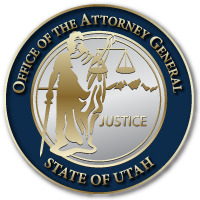April 16, 2020
The Utah Attorney General’s Office is urging the importance of digital security and privacy as Utahns telework and use online meeting software. Recently, Governor Gary Herbert extended the “Stay Safe, Stay Home” directive during the COVID-19 pandemic until May 1, and announced that Utah K-12 schools will remain closed through the academic school year. For some companies and Utahns, that means a continuation of working from home and using video-teleconferencing (VTC) platforms to conduct business or stay in touch with friends and family, and children will continue doing schoolwork online.
It is imperative that Utahns use these interfaces safely and continue to implement internet safety into their online routines. There have been instances in Utah where meetings have been a victim to hijacking or “Zoom bombing”. Hijackers exposed victims to pornography, racial slurs, and explicit content. In an effort to protect workers, students, and Utahns, the Utah Attorney General’s Office is providing tips to help protect you and your families. Below are some safety tips for online security while using VTC platforms.
- Familiarize yourself with the software. Each VTC platform – such as Zoom, Google Hangouts, and Microsoft Teams – has its own security and software. Before you use a new platform, make sure you know how each software functions and how to use the security available to you.
- Do not make meetings publicly available. Do not share a link to a meeting or classroom on social media posts or on publicly available web pages. Only give the link to the guests you would like to attend the meeting or class. In Zoom, you have the option to use a meeting password and to use a “waiting room” feature that allows you to directly control the admittance of people into your meeting.
- Keep software up to date. Make sure the software for each meeting platform you are using is up to date. Updates to software contain security updates and remove bugs from the software. Additionally, make sure your computer and security software are up to date. This will add an extra layer of protection to your information and can detect and remove most malware.
- Be care of downloading files. If possible on the meeting platform you use, turn off the ability to transfer files. If you need to send and receive files during a meeting, you can send it through more secure channels. Before you download, make sure you know who the file is from. Whether it’s a link or a PDF, cybercriminals can trick you into downloading malware.
- Manage screensharing options. Unless your guests need to share their screen with the group, you can make adjustments to screensharing settings. In Zoom, you can change the screensharing option to “Host Only”.
- Always use internet safety. Whether you’re using the internet for school, work, or pleasure, always use internet safety. Be aware of scams and do not share personal information online. Always use updated software and security. Consider using a virtual private network (VPN) to help protect your information from getting into the wrong hands. If you are teleworking, check with your company’s telework policy and requirements for physical and information security.
For more information, read the FBI’s warning on teleconferencing and online classroom hijacking here. For tips to help keeps your children safe online during the COVID-19 pandemic, go here.

